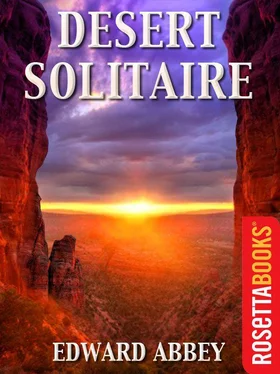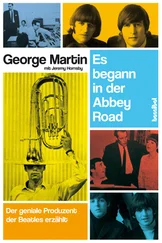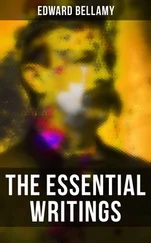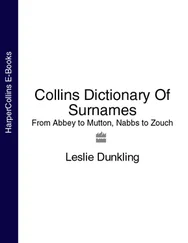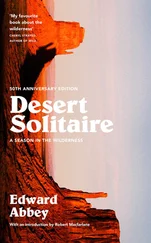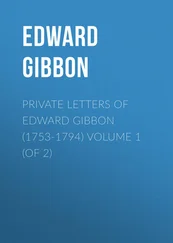Abbey, Edward - Desert Solitaire (Edward Abbey Series )
Здесь есть возможность читать онлайн «Abbey, Edward - Desert Solitaire (Edward Abbey Series )» — ознакомительный отрывок электронной книги совершенно бесплатно, а после прочтения отрывка купить полную версию. В некоторых случаях можно слушать аудио, скачать через торрент в формате fb2 и присутствует краткое содержание. Год выпуска: 2011, Издательство: RosettaBooks, Жанр: Старинная литература, на английском языке. Описание произведения, (предисловие) а так же отзывы посетителей доступны на портале библиотеки ЛибКат.
- Название:Desert Solitaire (Edward Abbey Series )
- Автор:
- Издательство:RosettaBooks
- Жанр:
- Год:2011
- ISBN:нет данных
- Рейтинг книги:4 / 5. Голосов: 1
-
Избранное:Добавить в избранное
- Отзывы:
-
Ваша оценка:
- 80
- 1
- 2
- 3
- 4
- 5
Desert Solitaire (Edward Abbey Series ): краткое содержание, описание и аннотация
Предлагаем к чтению аннотацию, описание, краткое содержание или предисловие (зависит от того, что написал сам автор книги «Desert Solitaire (Edward Abbey Series )»). Если вы не нашли необходимую информацию о книге — напишите в комментариях, мы постараемся отыскать её.
Desert Solitaire (Edward Abbey Series ) — читать онлайн ознакомительный отрывок
Ниже представлен текст книги, разбитый по страницам. Система сохранения места последней прочитанной страницы, позволяет с удобством читать онлайн бесплатно книгу «Desert Solitaire (Edward Abbey Series )», без необходимости каждый раз заново искать на чём Вы остановились. Поставьте закладку, и сможете в любой момент перейти на страницу, на которой закончили чтение.
Интервал:
Закладка:
So much for the stars. Why, a man could lose his mind in those incomprehensible distances. Is there intelligent life on other worlds? Ask rather, is there intelligent life on earth? There are mysteries enough right here in America, in Utah, in the canyons.
Had a letter today. Bob Waterman is coming from Aspen with his beard, his Land Rover and one hundred and fifty feet of new nylon rope. We are finally going to have a look into The Maze.
TERRA INCOGNITA:
INTO THE MAZE
“Do we really need all that rope?” I ask Waterman, as he proudly and smugly coils his new nylon and stows it into his pack, along with slings, carabiners, brakebars and other hardware. “Who’s going to carry it?”
“I’ll carry it,” he says cheerfully, through a magnificent, sandy beard; “you can carry the water.”
But before we can explore The Maze we have to find out how to get to it. There’s only one man in Moab who claims to have been there, a garage mechanic named Bundy, so we pay him a visit. Squatting on his heels, he draws us a map in the sand. Gas up at Green River, he says—it’ll be your last chance. Take about twenty gallons extra. Go south twenty-five miles toward Hanksville. About a mile past Temple Junction you’ll see a little dirt road heading east. Take it. Keep going about thirty-five, forty miles till you get to an old cabin. That’s French Spring. Better fill your water cans there; might be your last chance. Then south a few miles toward Land’s End brings you out to the head of Flint Trail. Look it over careful before you try to go down. If you make it head north six miles past Elaterite Butte to Big Water Spring—should be water there, though this time of year you can’t always be certain. Keep bearing north and east. Seven miles past Big Water Spring you come to The Maze overlook and that’s the end of the trail. From there on you could use wings.
We follow his instructions carefully and they turn out to be as correct as they are precise. We camp the first night in the Green River Desert, just a few miles off the Hanksville road, rise early and head east, into the dawn, through the desert toward the hidden river. Behind us the pale fangs of the San Rafael Reef gleam in the early sunlight; above them stands Temple Mountain—uranium country, poison springs country, headwaters of the Dirty Devil. Around us the Green River Desert rolls away to the north, south and east, an absolutely treeless plain, not even a juniper in sight, nothing but sand, blackbrush, prickly pear, a few sunflowers. Directly eastward we can see the blue and hazy La Sal Mountains, only sixty miles away by line of sight but twice that far by road, with nothing whatever to suggest the fantastic, complex and impassable gulf that falls between here and there. The Colorado River and its tributary the Green, with their vast canyons and labyrinth of drainages, lie below the level of the plateau on which we are approaching them, “under the ledge,” as they say in Moab.
The scenery improves as we bounce onward over the winding, dusty road: reddish sand dunes appear, dense growths of sunflowers cradled in their leeward crescents. More and more sunflowers, whole fields of them, acres and acres of gold—perhaps we should call this the Sunflower Desert. We see a few baldface cows, pass a corral and windmill, meet a rancher coming out in his pickup truck. Nobody lives in this area but it is utilized nevertheless; the rancher we saw probably has his home in Hanksville or the little town of Green River.
Halfway to the river and the land begins to rise, gradually, much like the approach to Grand Canyon from the south. What we are going to see is comparable, in fact, to the Grand Canyon—I write this with reluctance—in scale and grandeur, though not so clearly stratified or brilliantly colored. As the land rises the vegetation becomes richer, for the desert almost luxuriant: junipers appear, first as isolated individuals and then in stands, pinyon pines loaded with cones and vivid colonies of sunflowers, chamisa, golden beeweed, scarlet penstemon, skyrocket gilia (as we near 7000 feet), purple asters and a kind of yellow flax. Many of the junipers—the females—are covered with showers of light-blue berries, that hard bitter fruit with the flavor of gin. Between the flowered patches and the clumps of trees are meadows thick with gramagrass and shining Indian ricegrass—and not a cow, horse, deer or buffalo anywhere. For God’s sake, Bob , I’m thinking, let’s stop this machine, get out there and eat some grass ! But he grinds on in single-minded second gear, bound for Land’s End, and glory.
Flocks of pinyon jays fly off, sparrows dart before us, a redtailed hawk soars overhead. We climb higher, the land begins to break away: we head a fork of Happy Canyon, pass close to the box head of Millard Canyon. A fork in the road, with one branch old, rocky and seldom used, the other freshly bulldozed through the woods. No signs. We stop, consult our maps, and take the older road; the new one has probably been made by some oil exploration outfit.
Again the road brings us close to the brink of Millard Canyon and here we see something like a little shrine mounted on a post. We stop. The wooden box contains a register book for visitors, brand-new, with less than a dozen entries, put here by the BLM—Bureau of Land Management. “Keep the tourists out,” some tourist from Salt Lake City has written. As fellow tourists we heartily agree.
On to French Spring, where we find two steel granaries and the old cabin, open and empty. On the wall inside is a large water-stained photograph in color of a naked woman. The cowboy’s agony. We can’t find the spring but don’t look very hard, since all of our water cans are still full.
We drive south down a neck of the plateau between canyons dropping away, vertically, on either side. Through openings in the dwarf forest of pinyon and juniper we catch glimpses of hazy depths, spires, buttes, orange cliffs. A second fork presents itself in the road and again we take the one to the left, the older one less traveled by, and come all at once to the big jump and the head of the Flint Trail. We stop, get out to reconnoiter.
The Flint Trail is actually a jeep track, switchbacking down a talus slope, the only break in the sheer wall of the plateau for a hundred sinuous miles. Originally a horse trail, it was enlarged to jeep size by the uranium hunters, who found nothing down below worth bringing up in trucks, and abandoned it. Now, after the recent rains, which were also responsible for the amazing growth of grass and flowers we have seen, we find the trail marvelously eroded, stripped of all vestiges of soil, trenched and gullied down to bare rock, in places more like a stairway than a road. Even if we can get the Land Rover down this thing, how can we ever get it back up again?
But it doesn’t occur to either of us to back away from the attempt. We are determined to get into Tire Maze. Waterman has great confidence in his machine; and furthermore, as with anything enormously attractive, we are obsessed only with getting in ; we can worry later about getting out.
Munching pinyon nuts fresh from the trees nearby, we fill the fuel tank and cache the empty jerrycan, also a full one, in the bushes. Pine nuts are delicious, sweeter than hazelnuts but difficult to eat; you have to crack the shells in your teeth and then, because they are smaller than peanut kernels, you have to separate the meat from the shell with your tongue. If one had to spend a winter in Frenchy’s cabin, let us say, with nothing to eat but pinyon nuts, it is an interesting question whether or not you could eat them fast enough to keep from starving to death. Have to ask the Indians about this.
Glad to get out of the Land Rover and away from the gasoline fumes, I lead the way on foot down the Flint Trail, moving what rocks I can out of the path. Waterman follows with the vehicle in first gear, low range and four-wheel drive, creeping and lurching downward from rock to rock, in and out of the gutters, at a speed too slow to register on the speedometer. The descent is four miles long, in vertical distance about two thousand feet. In places the trail is so narrow that he has to scrape against the inside wall to get through. The curves are banked the wrong way, sliding toward the outer edge, and the turns at the end of each switchback are so tight that we must jockey the Land Rover back and forth to get it around them. But all goes well and in an hour we arrive at the bottom.
Читать дальшеИнтервал:
Закладка:
Похожие книги на «Desert Solitaire (Edward Abbey Series )»
Представляем Вашему вниманию похожие книги на «Desert Solitaire (Edward Abbey Series )» списком для выбора. Мы отобрали схожую по названию и смыслу литературу в надежде предоставить читателям больше вариантов отыскать новые, интересные, ещё непрочитанные произведения.
Обсуждение, отзывы о книге «Desert Solitaire (Edward Abbey Series )» и просто собственные мнения читателей. Оставьте ваши комментарии, напишите, что Вы думаете о произведении, его смысле или главных героях. Укажите что конкретно понравилось, а что нет, и почему Вы так считаете.
